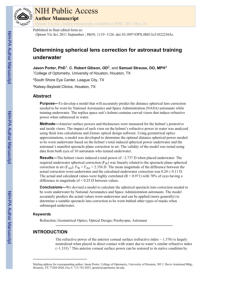Guidelines for the design and construction of diving
systems other than those of the IMO: 1970 - 2016

This technical manual contains operation and
maintenance information and procedures for the US Navy
Lightweight Dive System (LWDS) MK 3 Mod 0 and for
components of the LWDS MK 3 Mod 1 that are common
to both systems.
Note that Lightweight Dive Systems US Navy are scuba
replacements.
Reference USN: SS500-HK-MMO-010
Date: 07 may 2003

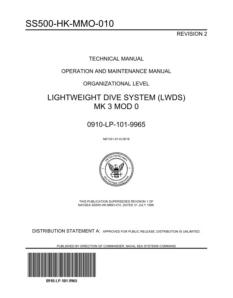

The standard US Navy double-Lock recompression
chamber system is a transportable chamber designed to
provide a means of recompression for diving operations,
including surface decompression of divers.
Reference USN: SS500-B1-MMO-010
Date: 22 March 2004

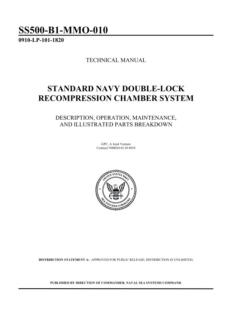

The solutions indicated in these guidelines are still those in
use in the diving industry.
Reference USN: SS521-AH-PRO-010
Date: 24 February 2005

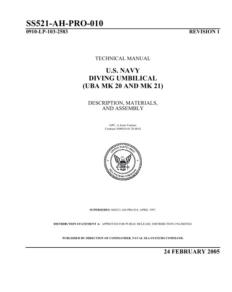

This document provides guidance, rules, and approaches
for designing a diving system according to the US Navy
requirements.
Reference USN: NAVSEATS500-AU-SPN-010
Date: 23 August 2006



This report updates and expands the original work
published in part in 1998 under the title, "The Evolution of
Safety and Design Standards for Underwater Breathing
Apparatus". Proceedings of the 14th Meeting of the
United States-Japan Cooperative Program in Natural
Resources (UJNR), Panel on Diving Physiology, Panama
City, FL, 1997, U.S. Department of Commerce, NOAA,
National Undersea Research Program, Washington D.C.
Reference USN: 1945 TO 2015
Date: February 2915

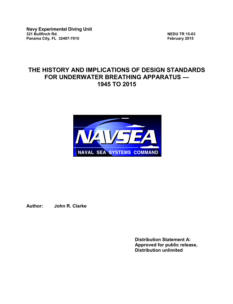


The Naval Medical Research conducted hyperbaric
research in a Man-Rated Chamber Complex (MRCC)
originally installed in 1977
Significant engineering alterations to the MRCC and
rusting of some of its interior sections necessitated
repainting, which was completed in 1988. Great care
was taken in selecting an appropriate paint (polyamide
epoxy) and in ensuring correct application and curing
procedures. Only very low levels of hydrocarbons were
found in the MRCC atmosphere before initial
pressurization after painting and curing. After
pressurization. however, significant chemical
contamination was found...

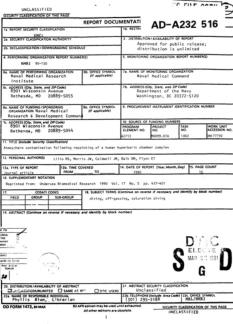

Authors: F. F. Leva, G. S. Goehring
US Navy recommendations for diving in contaminated
water included wearing a vulcanized rubber dry suit
mated to a MK 21 diving helmet to isolate the diver from
the contaminated environment. However, even in
situations (e.g., visible oil spills, noxious fumes, and sewer
outflows) where the need for protective gear is
unequivocal, thermal stress from working in a warm
environment often precludes the use of such gear. The
purpose of this study was to identify and evaluate a
commercially available diver cooling system through field
trials for overall effectiveness, comfort, durability, and ease
of use in and of incorporation into Navy diving practices.

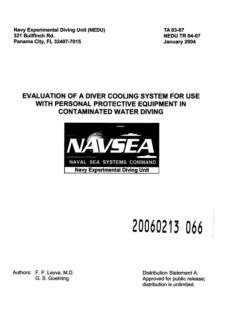

Authors: M. J. Swiergosz & R. J. Steckel
Resistive efforts, inhalation gas temperatures, and carbon
dioxide (CO2) canister and bottle durations were
measured from two Secondary Life Support (SLS) system
MK IV backpacks attached to the SLS helmet (Divex, LTD)
in simulated conditions. The resistive effort at 0 feet of
seawater (fsw) was assessed at three different backpack
orientations (00, 450, 900), and all of the dependent
measures were assessed at depth (1000 fsw) at the 450
orientation. A breathing simulator maintained a
respiratory minute volume (RMV) of 62.5 liters per minute
(L/min) throughout testing.

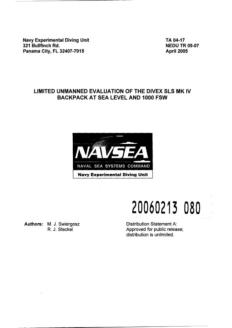

These Rules in association with the latest edition of the
ABS Rules for Building and Classing Steel Vessels (Steel
Vessel Rules), present the requirements for the
classification of underwater vehicles, systems and
hyperbaric facilities intended for use in manned
underwater operations

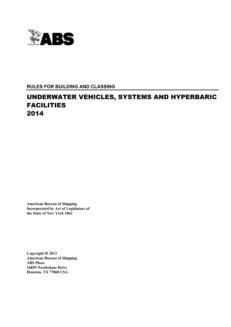

The present Note provides technical requirements for the
design, construction, testing and in-service surveys of
manned diving systems for which the class notations
defined in are granted.

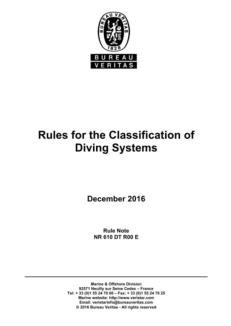

Authors: Ting C. Chou, Anthony Fiedorowicz.
Ten polymeric materials including EPDM, Nylon 6,6,
Buna-N, and other materials marketed as TFE-Teflon |
(PTFE), Kel-F 81 (PCTFE), Vespel | Spo21, Viton | A,
Viton | A-500, Fluorel | and Neoprene | were
systematically evaluated for their oxygen compatibility
property. The specific properties examined included:
Autoignition temperature (AIT), the heat of combustion,
and liquid oxygen (LOX) mechanical impact sensitivity.

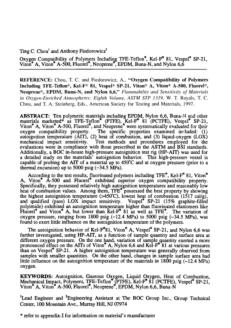

This guide applies to metallic materials under
consideration for oxygen or oxygen-enriched fluid service.
It is concerned primarily with the properties of a metallic
material associated with its relative susceptibility to ignition
and propagation of combustion. It does not involve
mechanical properties, potential toxicity, outgassing,
reactions between various materials in the system,
functional reliability, or performance characteristics such as
aging, shredding, or sloughing of particles, except when
these might contribute to an ignition.

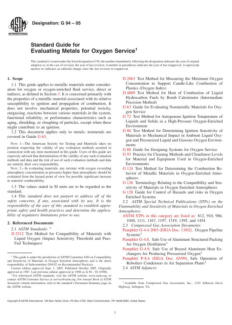

This guide applies to the design of systems for oxygen or
oxygen-enriched service but is not a comprehensive
document. Specifically, this guide addresses system factors
that affect the avoidance of ignition and fire. It does not
thoroughly address the selection of construction materials
for which Guides G63 and G94 are available, nor does it
cover mechanical, economic, or other design
considerations for which well-known practices are
available. This guide also does not address issues
concerning the toxicity of nonmetals in breathing gas or
medical gas systems.



This guide applies to nonmetallic materials (hereinafter
called materials) under consideration for oxygen or
oxygen-enriched fluid service, direct or indirect, as defined
below. It is intended for use in selecting materials for
applications in connection with the production, storage,
transportation, distribution, or use of oxygen. It is
concerned primarily with the properties of a material
associated with its relative susceptibility to ignition and
propagation of combustion; it does not involve
mechanical properties, potential toxicity, outgassing,
reactions between various materials in the system,
functional reliability, or performance characteristics such as
aging, shredding, or sloughing of particles, except when
these might contribute to an ignition.

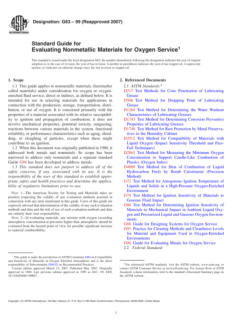

This guide covers an overview of the work of ASTM
Committee G-4 on Compatibility and Sensitivity of
Materials in Oxygen-Enriched Atmospheres. It is a starting
point for those asking the question: “Are there any
problems associated with my use of oxygen?”

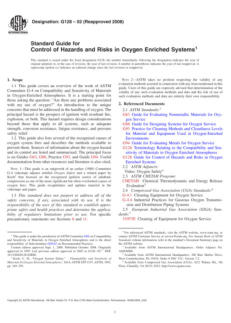

Authors: Mircea Horia Tierean, Liana sanda Baltes.
This paper presents the critical points in designing valves
used in reciprocating compressors. The design focuses on
valve type, dimensioning of the main elements, and
materials choice. The results obtained using
Computational fluid dynamics (CFD) and the method for
computing the centreline diameter of the rings and seats
to compensate for the thermal expansion during
operation are also explained.



The US Navy Experimental Diving Unit (NEDU) is the
United States Navy facility for testing and evaluating
underwater breathing apparatus (UBAs). Each military or
commercial UBA that the US Navy considers for use is sent
to NEDU to assess its performance, material suitability,
human factors, and systemic reliability.

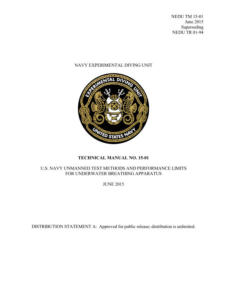

This US NAVSEA document provides courses and
reminders on electricity, electronics, Nuclear reactor work
principles, mechanic, chemistry, metals, and various
calculations. These courses are accessible to all levels.
Thus, it is appropriate for technicians and divers to keep it
in their data bank.

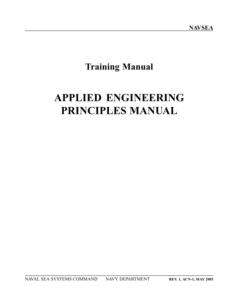

Authors: Sean Bishop, Keith Duncan, Helena Hagelin-
Weaver, Luke Neal, Jose Sanchez, Heather L.
Paul, and Eric Wachsman.
The partial electrochemical reduction of carbon dioxide
(CO2) using ceramic oxygen generators (COGs) is well
known and widely studied. However, complete reduction
of metabolically produced CO2 (into carbon and oxygen)
has the potential of reducing oxygen storage weight for
life support if the oxygen can be recovered.
The University of Florida developed novel ceramic oxygen
generators employing a bilayer electrolyte of gadolinia-
doped ceria and erbiastabilized bismuth oxide (ESB) for
NASA’s future exploration of Mars. The results showed that
oxygen could be reliably produced from CO2 at
temperatures as low as 400 degrees C.

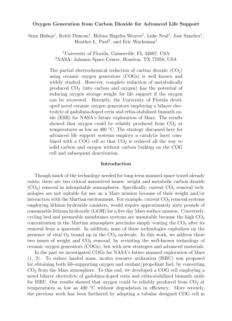

Authors:
Kevin R Ward, Gary S Huvard, Mark McHugh, Rajender R
Mallepally, and Richard Imbruce.
This paper provides a brief overview of the previous and
current attempts to utilize chemical oxygen production
strategies to enhance systemic oxygenation. While
promising, the routine use of chemically produced oxygen
continues to pose significant engineering and physiologic
challenges.

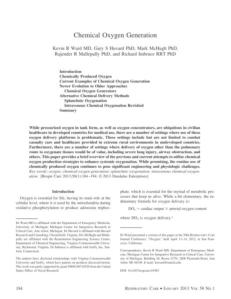

Authors:
Hanna Kierzkwska-Pawlak, Andrzej Chacuk.
The mass transfer rates during CO2 absorption and
desorption from DMEPEG* solutions were measured at a
temperature ranging from 293.15 to 323.15 K in a baffled
agitated reactor with a flat gas-liquid interface operating in
a batch-wise manner. The desorption rate was
determined and compared with the absorption rate at the
same driving force based on the measured values of
pressure changes.
*DMEPEG is a prominent solvent for absorbing both H2S
and CO2.

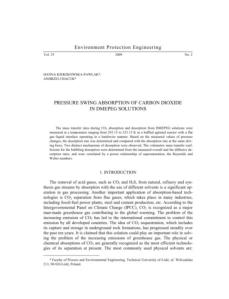

This NAVSEA approved procedure provides the minimum
US Navy requirements for paint removal, surface
preparation, repainting and air sampling of the interior of
Navy Steel & Stainless Steel Portable or
Afloat Recompression Chamber Systems using Formula
150 Primer and 152 Topcoat White in accordance with
MIL-DTL-24441D.



The Executive Board of the “Undersea and Hyperbaric
Medical Society Associates” authorized the organization of
a committee to develop a set of facility design
recommendations for clinical hyperbaric facilities. This
document is the work published by this committee.

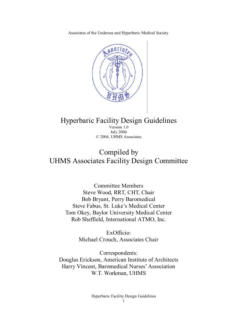

Authors: Thomas L. Reynolds, Thor I. Eklund, and Gregory
A. Haack
This document analyses oxygen systems from either
compressed oxygen gas cylinders or solid chemical
oxygen generators designed for use on commercial
transport aircraft. It allows a better comprehension of the
advantages and inconveniences of both systems that can
be considered for selecting means of oxygen delivery
during an emergency.

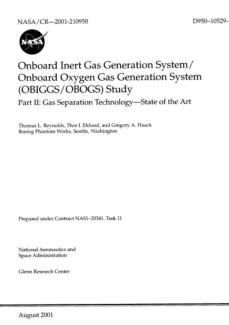

Author: Timothy L. Ward
This project addresses the need for reliable fabrication
methods of dense ceramic membranes for oxygen
separation. Some ceramic materials that possess mixed
conductivity (electronic and ionic) at high temperatures
have the potential to permeate oxygen with perfect
selectivity, making them very attractive for oxygen
separation and membrane reactor applications. To
maximize permeation rates at the lowest possible
temperatures, it is desirable to minimize diffusional
limitations within the ceramic by reducing the thickness of
the ceramic membrane, preferably to thicknesses of 10
µm or thinner.

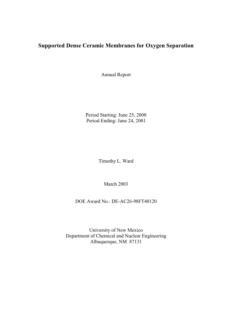

Authors: Justin Brady, Travis Spain, Brent Shambaugh
This project is intended to produce a device that can
deliver therapeutic oxygen supplement to persons
suffering from Chronic Obstructive Pulmonary Diseases
(COPD) and other ailments of the pulmonary tract. The
device is to be portable with the capacity to deliver a
stream of nearly pure oxygen at a rate of 5 L/min.



Authors: Jiang Dongsheng, Bu Xueqin, Sun Bing, Lin
Guiping, Zhao Hongtao, Cai Yan, Fang Ling
The present paper studies the ceramic membrane
technology for onboard oxygen generation. Comparisons
are made to know the effects of two ceramic membrane
separation technologies on oxygen generation: electricity-
driven ceramic membrane separation oxygen generation
technology and pressure-driven ceramic membrane
separation oxygen generation technology.

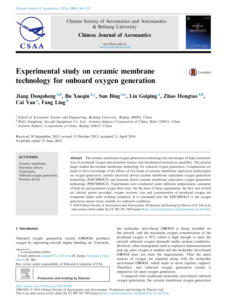

Authors: Thomas C. Blakeman; Dario Rodriquez Jr.; TSgt
Tyler J. Britton; Col Jay A. Johannigman; Lt Col
Michael C. Petro; Richard D. Branson.
Oxygen cylinders are heavy and present several hazards,
and liquid oxygen is too heavy to be used in far forward
environments. Portable oxygen concentrators (POCs) and
chemical oxygen generators (COGs) have been proposed
as solutions. The authors evaluated three commercially
available Portable oxygen concentrators and three
chemical oxygen generators in a laboratory. Altitude
testing was done at sea level and 8,000, 16,000, and
22,000 ft. Temperature extreme testing was performed
after storing devices at 60°C and − 35°C for 24 hours.

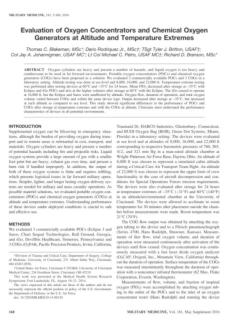

Author: Valerie Flook
“Unimed Scientific Limited” was contracted to lead the
development of a suitable monitoring device that would
alert the divers of the presence of volatile hydrocarbons
from condensate accidentally brought back to the bell.
The project was funded by a consortium of companies
and organizations concerned with the offshore oil
industry. This document is to be taken as the reference
regarding the comprehension of the ANALOX Hyper-Gas
Diving Bell Monitor.

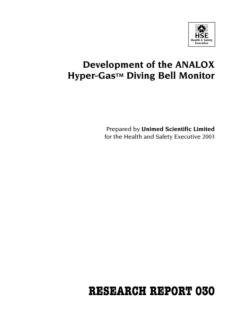

Authors:
Martin DJ Sayer, Elaine Azzopardi and Arne Sieber
Single examples of 43 models of dive computer were
compressed to five simulated depths between 15 and 50
metres sea water (msw) and maintained at those depths
until they had registered over 30 minutes of
decompression. At each depth, and for each model,
downloaded data were used to collate the times at which
the unit was still registering “no decompression” and the
times at which various levels of decompression were
indicated or exceeded. Each depth profile was replicated
three times for most models

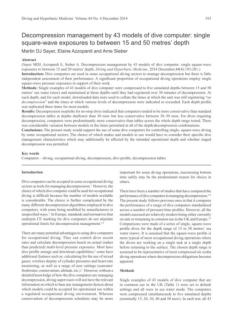

Authors:
David B. Kynor, William E. Audette
The goal of this project was development of a Diver
Health Monitoring System (DHMS). The DHMS will
provide a powerful capability for real-time monitoring of
the electrocardiogram and other key physiological
parameters during diving. The system evolves the concept
of the current dive computer into a physiological monitor
capable of measuring the diver's critical "vital signs" and
ultimately predict impending problems (e.g.. hypothermia
and excessive fatigue).

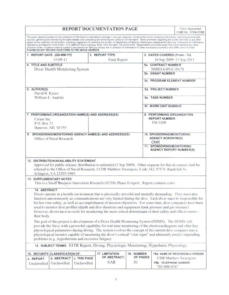

Authors: Eftedal O., Mohammadi R, Rouhani M., Torp, H.,
Brubakk A.O.
The authors developed a system for real-time detection
and quantification of intravascular gas bubbles. The
system is based on computer processing of video signals
of echo eardiographic images. Images from any
ultrasound scanner can be used, provided a standard PAL
video signal is available.
The detection program is a stand-alone application for
Macintosh computers, and the only additional hardware
requirement is a commercially available video frame
grabber card for digitisation of the video signal.

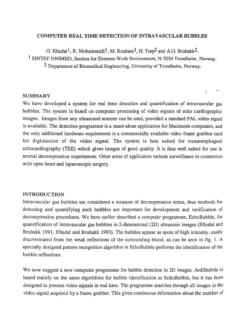

Authors: Cunningham, S., Burke, A., Kelly,
This document describes the development of a transient
model of a Closed Circuit Rebreather to investigate the
effects of several key parameters affecting rebreathers'
scrubbers' performance: geometry, wall temperature,
velocity, and CO2 absorption granule size and material
selection on the breakthrough of the CCR scrubber,
where breakthrough is defined as the time until the CO2
exhausted from the scrubber canister is the same as that
going in.

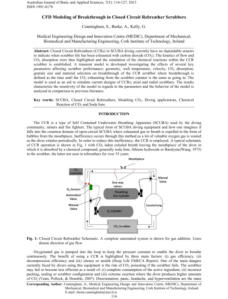



Click on the
octopus to return to
the top of the page

Authors: T. Vu Quoc, H. Nguyen Dac, T. Pham Quoc, D.
Nguyen Dinh, T. Chu Duc
This paper introduces a three-electrode capacitive fluidic
sensor designed to detect air bubbles in fluidic channels
such as blood vessels, oil pipes, or medical liquid channels.
The sensor is fabricated on a printed circuit board (PCB)
with electrodes made from copper via structures
extending from the top to the bottom surface of the PCB.
A plastic pipe runs through the capacitive sensor and is
positioned perpendicular to the PCB surface.



Authors:
Ding-Yu Fei, Xiaoming Zhao, Cosmin Boanca, Esther
Hughes, Ou Bai, Ronald Merrell, Azhar Rafiq
This document describes the development, testing, and
validation of an embedded biomedical sensor system
designed to monitor astronauts' physiological parameters
in real-time during extravehicular activities (EVA) in space
exploration. It outlines the project's objectives, methods,
results, and conclusions, emphasizing the system's
successful integration and functionality in NASA field tests.

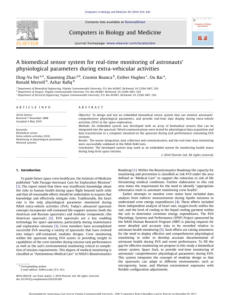

Authors:
A. Afaneh, S. Alzebda, V. Ivchenko, & A. N. Kalashnikov
The authors of this document describe and compare two
different ultrasonic measurement approaches for
determining temperature in aqueous solutions. They detail
both approaches' methodologies, experimental setups,
and results, highlighting their sensitivity, accuracy, and
advantages over conventional thermometers.

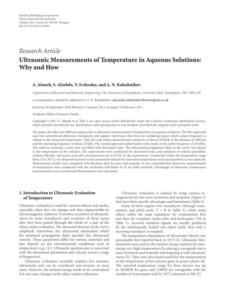




Authors: Michael J. Tipton & Frank St.C. Golden
This study investigated the physiological responses of male
subjects to cold water immersion under different
conditions. The study aimed to determine how protecting
different parts of the body (torso vs. limbs) affects heart
rate, minute ventilation, and respiratory frequency during
immersion. The results suggest that limb protection plays a
more significant role in reducing heart rate during cold
water immersion compared to torso protection.

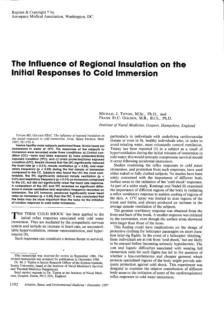

Author: M. J. Tipton
This paper explains the fundamental principles of the
Integrated Survival System (ISS), which include offering
protection against hazards associated with cold water
immersion and ensuring that the components of the ISS
are compatible, complementary, and possibly
interdependent. Additionally, the text suggests that these
principles can be applied to other users and situations
requiring specialized protective clothing.

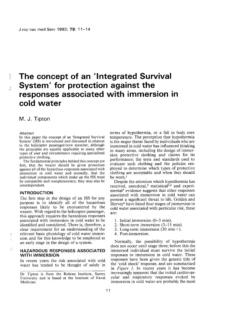

This manual provides detailed instructions on the proper
use, routine maintenance, troubleshooting, and safety
protocols necessary to ensure the efficient and safe
functioning of the FADS III Air System that should be
considered a scuba replacement.

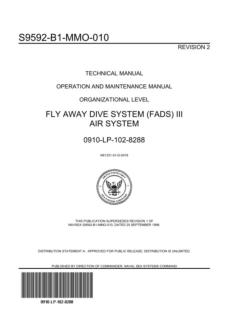

Authors: Ryszard Kłos
This paper explains a new method for classifying diving
apparatuses based on three criteria: the type of breathing
gas, the operational depth range, and the principle of
operation, with the breathing gas being the most
important criterion. The paper emphasizes that this
approach is innovative and has not been presented
before, suggesting it is a correct method for classifying
diving apparatuses.

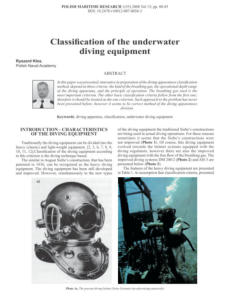

This document provides detailed information about the
Saturation Fly-Away Diving System (SAT FADS) Acquisition
Program. It outlines the program's initiation, purpose,
approval process, and the system's capabilities,
components, and deployment methods. Also, it provides
information about the SAT FADS's role in supporting Navy
salvage and recovery operations, its technical
specifications, and its logistical deployment capabilities.

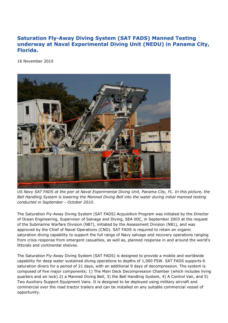



1 - Manned evaluation of the MK14 closed circuit saturation diving
system.
Publisher: US Navy
The MK 14 Closed Circuit Saturation Diving System was
tested at depths of 167 FSW to 1100 FSW for heavy work
support. Measurements included helmet CO2, pressure,
gas temperature, and heart rate. Analysis shows the MK
14 supports heavy work and meets design objectives.
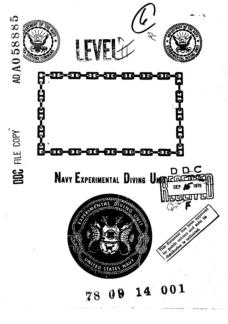

Authors: Ryszard Kłos
This paper contains hyperbaric test facility equipped with
swimming simulator description dedicated to diving
apparatuses decompression research. This stand has been
constructed within two scientific projects financed from
research funds from the Polish Ministry of Sciences and
Higher Education in 2009-2012 and it was realised in the
Naval Academy of Gdynia.


32 - Hyperbaric swimming simulator.
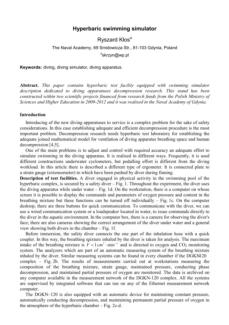



34 - Decompression management by 43 models of dive computer:
single square-wave exposures to between 15 and 50 metres’
depth.

Authors: Martin DJ Sayer, Elaine Azzopardi and Arne
Sieber.
Dive computers are important in occupational diving to
manage decompression, but their performance has not
been thoroughly assessed. In this study, 43 models were
tested at depths of 15 to 50 meters for over 30 minutes of
decompression. Results showed that computers were
generally more conservative than standard tables at
shallower depths but less so at deeper ones. Variations
among models were notable. The study supports using
certain dive computers for specific occupational diving
practices, depending on their characteristics and depth
management.
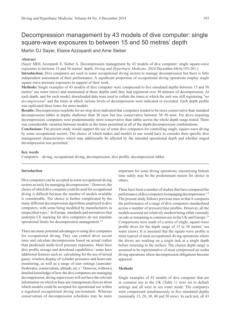



43 - User settings on dive computers: reliability in aiding conservative
Diving.
Authors: Martin DJ Sayer, Elaine Azzopardi, and Arne
Sieber
Divers can adjust their diving computers to dive more
conservatively, especially with certain health conditions.
There is limited information on how these changes
compare to other methods like using enriched air nitrox.
Seven dive computer models were tested with different
dive profiles. Results showed that conservative settings led
to shorter dives or longer decompression times, and
default settings varied in conservatism. Some computers
had issues during multi-dive series. Adjustments on
Suunto computers offered minimal differences. Overall,
the variety of adjustments and inconsistent computer
responses make it hard to give clear advice for
conservative diving.
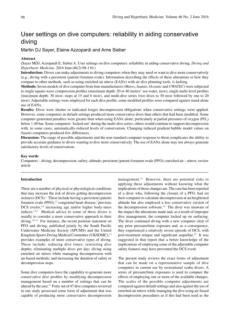



Publisher: Jim G Mastro, Neal W. Pollock
This study can be considered for the selection of bail out
regulators: The Sherwood Maximus is the main regulator
used in the U. S. Antarctic Research Diving Program. This
study suggests that itsfailure rate was 1.7%, compared to
9.1% for other regulators. The optional heat retention
plate showed a lower failure rate but did not significantly
improve reliability. Further testing is suggested by the
authors due to potential user-related failures with the
plate.
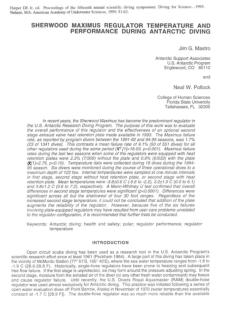
5 - Sherwood Maximus regulator temperature and performance
during Antarctic diving


33 - Determining spherical lens correction for astronaut training
Underwater
Authors: Jason Porter, C. Robert Gibson, and Samuel
Straus
This study describes a model developed to predict the
distance correction required by NASA astronauts for
underwater spherical lens use. The helmet's curved visors
induce refractive power, and the model was tested using
data from 10 astronauts. The results showed a model that
accurately predicted underwater correction values and
that can be applied to determine suitable spectacle lens
correction for underwater masks.
